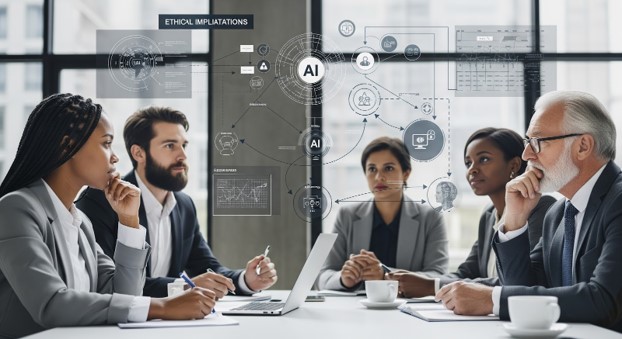Using the concepts of systems thinking to steer digitalisation and “AIfication” offers a crucial framework for navigating the profound transformations these technologies bring to our world. Here’s a breakdown of why:
Managing complexity:
Digitalisation and AI don’t just add new tools; they create intricate new layers of connection and dependency. A traditional, linear, or reductionist approach (solving one problem at a time in isolation) is bound to fail. Systems thinking, by its very nature, is designed to handle complexity. It encourages us to map out the “elements” (e.g., AI algorithms, data sources, user interfaces, human teams, regulations) and, more importantly, the “interconnections” between them to understand the whole.
Anticipating unintended consequences:
As Donella Meadows pointed out, the structure of a system is the primary cause of its behavior. When we introduce a powerful new element like an AI, it will inevitably alter the entire system’s behavior, often in unexpected ways. Think of algorithmic bias in hiring (an AI optimized for one goal creates unfairness in another) or the spread of misinformation through social media algorithms. A systems approach forces us to ask: “If we change this part of the system, what feedback loops might be created? What emergent behaviors could result?” This foresight is critical to developing responsible AI.
Focusing on purpose and function:
The definition of an infoSystem highlights its purpose: providing reliable information for confident decision-making. Similarly, systems thinking demands that we define the purpose of our digitalization efforts. Are we aiming for pure efficiency? For enhanced human capability? For greater customer satisfaction? Without a clearly defined and shared purpose, “AIfication” can become a goal in itself, leading to technological solutions that don’t serve a meaningful human or organizational function. The purpose becomes the ultimate criterion against which the system’s performance is measured.
Building resilience (like an ecosystem):
The concept of an ecosystem offers a powerful metaphor. A healthy ecosystem is resilient; it can absorb shocks and adapt. How do we build resilient socio-technical systems? By fostering diversity (of data, models, and human perspectives), enabling self-regulation (through monitoring and ethical oversight), and designing for adaptation. A rigid, monolithic AI system is brittle. A modular, interconnected, and constantly learning “AI ecosystem” is more likely to be robust and sustainable over time.
Identifying leverage points:
Perhaps the most powerful aspect of Meadows’ work is the concept of “leverage points”—places in a complex system where a small shift can lead to a large change in the system’s behavior. In the context of digitalization, the highest leverage point isn’t necessarily the technology itself. It might be the “rules of the system” (data governance policies, ethical guidelines), the “mindset or paradigm” out of which the system arises (e.g., shifting from a goal of automation to a goal of augmentation), or the flow of information (transparency in how an AI makes decisions).
In conclusion, applying systems thinking to digitalization and AIfication moves us beyond a simple “plug-and-play” view of technology. It forces us to act as architects of complex, adaptive systems, paying as much attention to the human elements, the invisible rules, and the ultimate purpose as we do to the hardware and software. In an increasingly interconnected and volatile world, this holistic perspective is the only viable path forward for steering technological change in a way that is effective, responsible, and beneficial.





